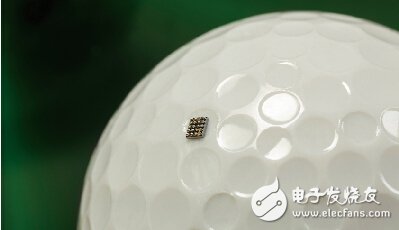As a British company that produces instruction set architecture for computer processors, ARM is definitely not a household name, at least not as famous as Apple's iPhone and Google's Android. However, ARM is as ubiquitous as iPhone and Android. If you have a smartphone in your pocket, it's very likely—not right, it's very likely—its chip is ARM.
According to ARM, more than 95% of smartphones worldwide use the company's microprocessor technology, not to mention a significant proportion of smart TVs, wearables, game consoles and auto parts. At present, more than 50 billion ARM-based chips are silently providing power to more than half of the technology community.
After a summit in a certain field, where should a highly successful company go? Nature is another finding a peak to climb. As more home appliances, cars, machines and other items connect to the wireless network, the "Internet of Things" is growing. This field is expanding year after year, and ARM has begun to attack.

Ian Ferguson, vice president of marketing for ARM, said: "There are a lot of opportunities in this area. If we apply technology to all kinds of devices, there is obviously an opportunity to improve efficiency. But the problem has also become How to improve the quality of life."
According to estimates by Cisco, there are currently approximately 13 billion wireless networking devices worldwide. ABI Research predicts that by 2020, this number will exceed 30 billion. By 2017, revenues from technology and services related to the Internet of Things are expected to reach $7.3 trillion. This seems to be related to the future of the global technology market.
'This may be controversial'
It is difficult to describe ARM's efforts in the Internet of Things, because the world-famous chip company itself does not manufacture chips, but instead licenses its design to some semiconductor companies to produce ARM-based chips.
Companies licensed to use ARM technology include AMD, Broadcom and Qualcomm. Original equipment manufacturers (OEMs) such as Samsung, HTC, and Sony use the company's chips to make new phones, tablets, and other devices. ARM's technology is used to enter consumers' hands. .
Ferguson said: "The chips required for mobile phones, smart watches and networked microwave ovens are very different. We provide core modules, partners adopt our technology and use them for networked devices. The key is customization."
Given that ARM dominates the mobile phone market and that mobile phones are the preferred networking device for consumers, the company believes it is well positioned to promote connectivity.
Ferguson said: "The use of mobile phones as a conduit for information about themselves and the surrounding areas will be a major area of ​​application for the Internet of Things." Applications or services for monitoring asthma and heart health are good examples.
Ferguson said that ARM's technology has also begun to be applied to wearable devices, such as head-mounted devices and smart bracelets. “The entire field will move forward – wearables will be a more coordinated part of the overall experience.â€
The bigger business opportunity lies in the enterprise – networked devices can be used to reduce costs and increase efficiency. Ferguson said manufacturing and oil and gas exploration are two potentially promising applications. “Many companies have extremely valuable assets, and preventive mechanical services can detect problems before they fail, improving efficiency,†he said.
In the city, embedded sensor technology is expected to increase the efficiency of public lighting and garbage collection. Ferguson also deliberately listed the successful example of BigBelly Solar's development of smart bins.
Even street parking problems are expected to be resolved through the Internet of Things. Ferguson said: "In San Francisco, parking spaces in some areas can detect whether there is a car on the parking space, and people can book parking spaces by phone. This is very efficient. However, if the city authorities know that parking spaces in certain areas are often When booking, they may be able to sell valuable new services in these areas. You may even see pricing adjustments based on the level of enthusiasm. This may be controversial."
Cities such as Los Angeles and Berkeley in California have begun to evaluate the technology.
Thinner than human hair
In response to these problems, ARM introduced the Cortex-M microprocessor family, which is known for its energy-saving and miniature microprocessors for wearable and embedded applications. (For example, the Cortex-M0+ processor is smaller than the average width of human hair.)
In June this year, ARM announced the establishment of a CPU design center dedicated to the development of this microprocessor in Hsinchu, Taiwan. This is also the company's first CPU design center in Asia. In addition, ARM held an IoT technical seminar in Singapore this month.
This is flex LED neon sign, soft silicon tubes with flexible LED strip inside tubes look like vintage glass neon sign. Flex LED neon sign is safe, non-frangible. It's better choice for large text and logo. Glass neon sign is frangible, but is more flexible and better bending for small text logo. If you are looking for glass neon sing, please visit our store or contact us.
The flex LED neon sign is recommended for wedding, makeup, tattoo, bar, coffee, business store & home decoration etc. It's hand crafted artist. Show your characters by custom personalize neon sign. Contact and discuss with us about your design or idea. Make your dreams come true!
Custom neon sign, unique neon signs, personalized neon signs
Shenzhen Oleda Technology Co.,Ltd , https://www.baiyangsign.com
